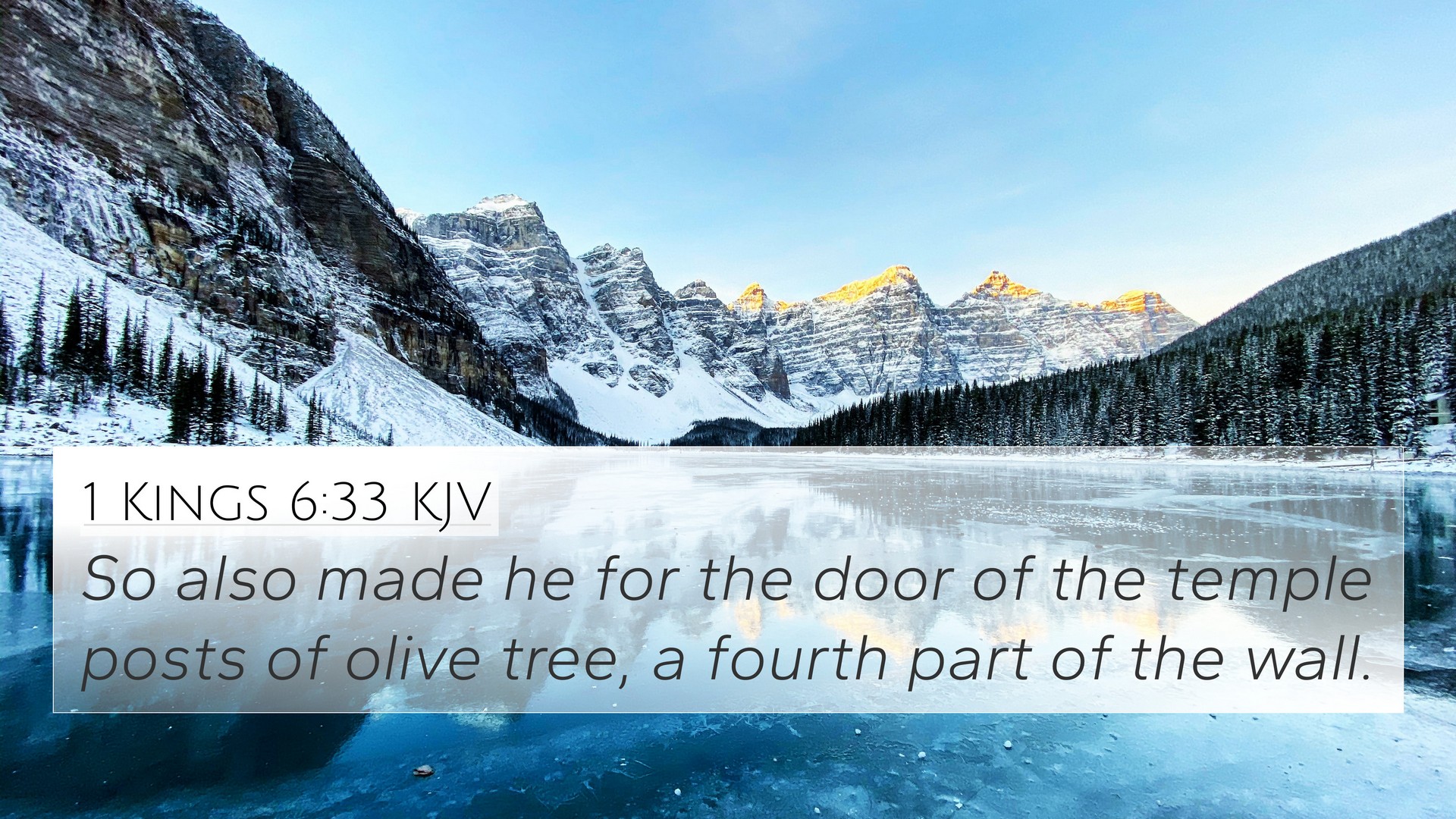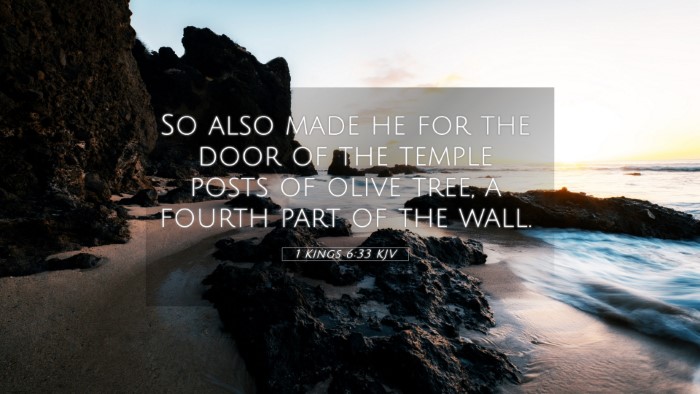Understanding 1 Kings 6:33
The verse 1 Kings 6:33 reads:
“So also he made for the entrance of the nave posts of olive wood, each post was a fourth part of the wall.”
This passage describes part of the construction of Solomon's temple, emphasizing the materials used and their significance.
Commentary Insights
Drawing from the insights of esteemed biblical commentators such as Matthew Henry, Albert Barnes, and Adam Clarke, this verse offers rich theological and practical applications.
Significance of Materials
- Matthew Henry: Highlights the symbolic nature of materials, where olive wood represents peace and prosperity, linking it to the peaceful reign of Solomon.
- Albert Barnes: Notes the durability and beauty of olive wood, illustrating the temple’s majesty and the craftsmanship of its builders.
- Adam Clarke: Emphasizes the precision in measurement and the intricate design, showcasing the divine guidance in the temple's construction.
Architectural Features and Their Meaning
The verse specifies the entrance of the nave, a crucial area of the temple. The meticulous mention of the posts points towards:
- Covenant Presence: The nave symbolizes a place where God's presence resides, connecting to the broader theme of divine interaction with humanity.
- Access to God: The entrance signifies the way to come before God, paralleling New Testament concepts of Jesus as the door (John 10:9).
Thematic Connections
1 Kings 6:33 is intricately linked with various biblical themes including:
- Divine Majesty: The construction of the temple in itself is an act of worship and reverence towards God’s majesty.
- Symbolism of the Temple: The physical structure represents the spiritual relationship between God and His people.
Bible Verse Cross-References
This verse can be cross-referenced with several other biblical passages, providing a more comprehensive theological understanding:
- 1 Chronicles 28:2-3: Discusses the plans for the temple.
- 2 Chronicles 3:5-7: Details the materials used in the temple.
- 1 Kings 6:18: Talks about the inner walls of the temple being lined with cedar.
- Ezekiel 40:5: Visions of a new temple, illustrating continuity in the theme of temple worship.
- Hebrews 9:24: Mentions the heavenly tabernacle, reflecting the earthly temple's significance.
- Matthew 21:12: Jesus cleanses the temple, underscoring its sanctity.
- Revelation 21:22: Speaks of the absence of a temple in the New Jerusalem, indicating God's direct presence among His people.
Cross-Referencing Biblical Texts
Utilizing a Bible concordance and other Bible reference resources can significantly enhance your understanding of the connections between these verses. By practicing cross-referencing:
- Identify connections between Old and New Testament: Explore how the themes of solid construction and divine presence lead from 1 Kings to revelations in the New Testament.
- Cross-referencing Psalms with New Testament teachings: Recognize parallels in worship and God’s promises throughout Scripture.
- Tools for Bible cross-referencing: Use guides that illustrate how to trace thematic and contextual ties, enriching your study.
Conclusion
In summary, 1 Kings 6:33 exemplifies not just the physical construction of the temple but serves as a platform for broader theological reflections on God’s relationship with His people, the significance of worship, and the preparatory nature of the Old Testament leading to New Testament revelations. By understanding this verse within its context and through cross-referencing, believers can deepen their comprehension of the intertwined narratives in the Bible.


